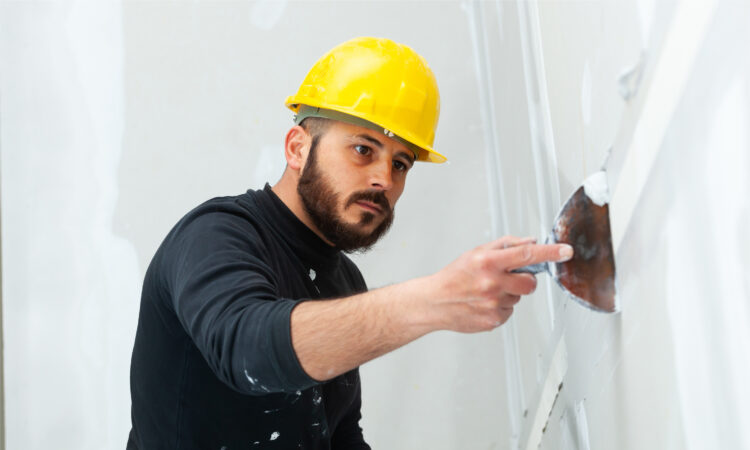Gypsum plasters have revolutionized the Indian construction industry. They have gained steam in the past few years and have become a primary construction material in India. Apartments, villas, townships, and other high-rise buildings, whether residential or commercial, prefer gypsum plasters. Kanish Plasters has a decade-long history and experience of serving in the gypsum plastering market. We serve small, medium and large scale builders and the nitty-gritties of some of our flagship projects can be studied in this link –Projects.
In this blog, we bring to your table our thoughts and experiences on why apartments, and other high-rise buildings prefer to use gypsum plasters instead of cement plasters.
Lower cost of construction
Gypsum plasters reduce the overall cost of construction. As per our experience and from what research suggests, gypsum plasters reduce about 20% of the total construction cost. This is expected to be greater in high-rise buildings where the plastering area is higher when compared to normal buildings.
This is also an important factor of consideration for construction companies and builders particularly when the cost of construction in India has surged by more than 20%, of late. At a time, when builders are looking for alternative options to reduce construction costs, gypsum plasters are an essential consideration. So, if you are a builder involved in construction of apartments, and other high-rise buildings, and struggling to meet the rising construction costs, gypsum plasters are a must-try option. There are chances that you are losing out on competition if you do not try gypsum plasters, because a lot of other companies have already shifted to gypsum plasters and are quoting competitive prices.
Win a bid in the competitive landscape
Because a lot of times, apartments and other high-rise buildings are rented for use as residential or commercial purposes, it is possible to offer competitive prices if you shift to using low-cost construction materials. This is also the case when such buildings are sometimes sold out after development and construction. This would not help you survive, but also thrive and prosper. This is so because you would be able to garner a higher market share and still a greater profit than your competitors in the market.
Gypsum plaster reduces plastering weight by 35%
The ultimate objective of civil engineers and architects involved in the construction of high-rise buildings and apartments is to reduce the dead weight of the building. This is very important in high-rise buildings because a higher weight lowers the resistance of the buildings towards high speed wind and earthquakes. Gypsum plasters have low density and high compressive strength that lowers the weight of plasters. So, builders and construction companies involved in the construction of apartments and high-rise buildings prefer gypsum plasters over cement plasters. This increases their resistance to natural forces and calamities including earthquakes and high speed winds.
Gypsum plaster accelerates the pace of construction
Gypsum plasters reduce the overall time of construction. Our experience shows that gypsum plaster saves about 75% of construction time. This is because gypsum plasters do not require water curing unlike cement plasters. Cement plasters require that they be sprayed and splashed with water for 15 to 21 days so as to let them settle down and gain their inherent strength. Whereas, gypsum plasters gain their inherent strength within 3 days and become paint ready in 4 days of time. This is far lesser when contrasted with the cement plaster. And imagine the amount of time savings builders can avail when they use gypsum plasters to plaster apartments, and other high-rise buildings. This is huge, isn’t it?
Gypsum plasters produce a smooth finish
Either you wish to sell your property, houses or apartments, or rent them, appeal and aesthetics play a key role in attracting prospective buyers and renters. Gypsum plasters produce a smooth finish and a crackless surface. This is unlike cement plastered walls that are prone to cracks and flaws. It is due to this that cement plastered walls require application of putty before we paint them. On the other hand, gypsum plastering reduces the need for putty. Because gypsum plastering produces a smooth finish, the walls are paint ready and do not require application of putty. Overall, gypsum plasters improve the appearance and aesthetics of the apartment and commercial properties, and improve their real value. This in turn attracts more and more prospects, no matter whether you are trying to sell them or rent them.
Gypsum plaster resists the growth of fungi and algae on the wall
Gypsum is a natural disinfectant. Gypsum plasters keep fungi, algae and other microbes at bay. Gypsum plastered walls also repel insects. This is more important in huge apartment buildings and other high-rise buildings where cleaning and maintenance is cumbersome. This is a very important consideration after the emergence of COVID-19 where people are so wary of microorganisms.
Gypsum plastered walls are easy to clean and maintain
Stains and spots on the gypsum plastered walls are easy to clean. This is unlike cement plasters where cleaning is a cumbersome task involving tedious processes. Cleaning the gypsum plastered wall is relatively easy and does not require too many personnel. Wiping off the stains with a wet cloth is all that needs to be done when it comes to cleaning a gypsum plastered wall. This is an important consideration when there is shortage of labor and personnel involved in maintenance and cleaning.
Gypsum plastering reduces labor requirements
Gypsum plastering reduces 40% lower labor than cement plasters. Given that there is mass resignation happening all over the world and that the industrial landscape is grappling with labor shortages, builders can still deliver their construction on time, if they choose to shift to gypsum plasters. Higher wages are also a serious problem that the construction industry is enduring. Because the gypsum plastering has lower manpower requirements and labor resources, it has the potential to reduce labor cost of the buildings. This in turn reduces the overall cost of building and construction.
Enhances the LEED certification points
Gypsum is a natural mineral deposited at the sedimentary rocks found in ocean and river beds. This is unlike cement that is a major contributor to greenhouse emissions. Studies suggest that cement contributes to 8% of greenhouse gas emissions. Cement industry is also a major consumer of energy commodities and fossil fuels. Shifting to gypsum paves way for construction of green buildings which in turn improves the LEED certification points. At a time when climate change has received overwhelming attention, shifting to gypsum plasters will help you gain momentum in the marketplace.
Are you worried about the rising construction costs? Are you struggling to complete the projects at the agreed upon price? Or is it more difficult to handle labor shortages and surging wage rates? If you are a builder or a construction company struggling to handle one or all of the above, shifting to gypsum plasters would help you survive and thrive.
Kanish plasters is a leading gypsum plastering company with offices in all major cities across India. We have catered to several builders and construction companies like Tata Constructions, who are involved in construction of apartment complexes and high-rise buildings. Some of them include Pooja Park Town, Coimbatore, Amirtham Apartments, Tirupur, Kubera Pooja Park, Coimbatore, Vevin Homes, Coimbatore, Metro City, Coimbatore, S & P Signature Villas, Chennai, Isha homes, Chennai, Casagrande Zenith, Chennai and so on.
Visit www.kanishplasters.com
Contact +1800 208 9006 or write to us at [email protected].



